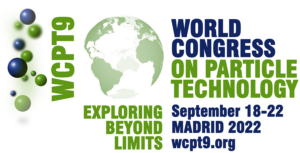CPFD Software has been invited to speak at the 9th World Congress on Particle Technology (WCPT9) taking place September 18-22, 2022 in Madrid, Spain. James Parker, CTO, will speak on “CFD modeling for Industrial FCC riser feed injection with extension to other vapor/liquid/solid applications”.
Presentation Summary: CFD modeling for Industrial FCC riser feed injection with extension to other vapor/liquid/solid applications
Computational fluid dynamics (CFD) modeling has been used to simulate FCC risers since the 2000s using various commercial CFD tools including Barracuda Virtual Reactor.
Historically, for CFD modeling with reactions, the hydrocarbon feed to the riser is assumed to be instantly vaporized, or very simple approximations are made to close the mass balance between phases. However, the liquid injection, liquid penetration, spray angle, droplet size distribution, liquid-solid contact dynamics, vaporization and gas-phase expansion are some of the important parameters that can only be captured if the feed is injected as liquid. Therefore, liquid feed injection, as opposed to injecting the feed in gas phase, is central to typical phenomena of interest for risers.
In this work, we have used Virtual Reactor to simulate an industrial scale FCC riser for a US Gulf Coast refinery. The feed is injected as discrete liquid droplets. Part of the liquid feed directly vaporizes into the gas phase while some of the liquid forms a film on the catalyst particles as a result of contacts between droplets and particles. This film transfers to other particles and vaporizes into the gas-phase using the heat from both the gas and the particles.
For this application, the liquid feed injection is characterized by features such as droplet size distribution, spray angle, composition and momentum flux distribution. Liquid penetration, liquid film transfer from droplets to catalyst particles and vaporization are captured. Overall vaporization times obtained from the model agree with commonly known commercial riser design criteria. We also demonstrate that liquid feeds, consisting of multiple components with different boiling points, show vaporization profiles agreeing with expectations for multi-component hydrocarbon feed vaporization.
Extension to more general vapor/liquid/solids applications, including ebullated beds is discussed. In cases where the carrier fluid is a liquid, the model is used to capture gas bubble and solid particle dynamics, multi-component vaporization, gas absorption, and multiphase reaction chemistry. Results from a full scale ebullated bed hydrocracker are shown, with comparisons made to available experimental data.
About James Parker
James oversees the software development of Barracuda Virtual Reactor and CPFD’s computational research of multiphase modeling techniques. Prior to his appointment as CTO, James was Principal Chemical Engineer for CPFD Software and used Barracuda Virtual Reactor on a wide range of fluidization modeling projects for refining, polyolefin, biomass, coal, and polysilicon applications. James has a PhD in Chemical Engineering from Oregon State University where his research included the development of numerical methods for multiphase flow.

